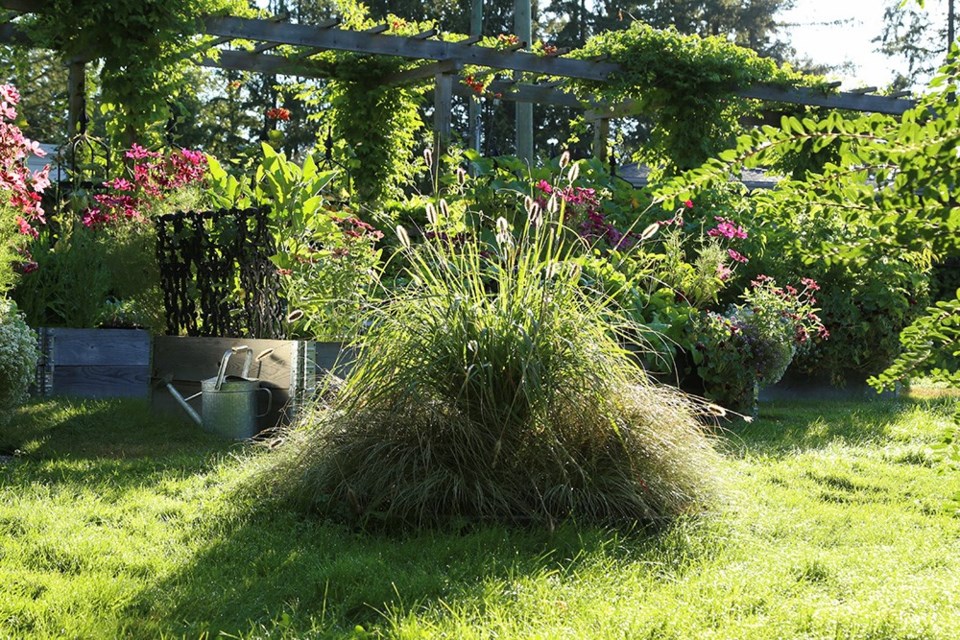So-called companion planting is a field of study worth digging into, primarily as a means of biological and environmental control of garden pests and pathogens, but also to improve soil fertility and pollination.
There is no shortage of anecdotal advice about what to plant where in a food garden, and while much of it rings true, the why of it all is less clear. I am an ardent fan of inherited knowledge, of both the victory garden vintage, and from indigenous elders. Also though, the cynic in me craves science. I need to know “why.”
One of the first gardening books I read as a child was Carrots Love Tomatoes by Louise Riotte. That companion planting book, together with the culinary anthropology tome You Eat What You Are by Thelma Barer-Stein, inspired lifelong curiosity about the relationships between the “nature of food” and “human nature,” and about the “whys.”
Recently, I ran across a gently used copy of Jessica Walliser’s 2020 book Plant Partners, Science-Based Companion Planting Strategies for the Vegetable Garden, and would recommend it to all gardeners interested in learning digestible bits about the many complex above- and below-ground relationships that create, maintain, and restore balance organically.
One of my favourite pages referenced a clever holistic management tool called “beetle banks,” used by farmers in the U.K. and Australia to attract hundreds of species of pest-eating ground beetles and shredding insects. Beetle banks are long raised berms of soil planted densely with specific native grasses, a.k.a. beetle habitat, situated parallel to several alternating crop rows.
Studies show that the beetles scoot out at night to feast on aphids, slugs, snails, caterpillars, larvae and many other pests, and then scootch back into the thatch at night to avoid predation. How clever is that?
Walliser writes that Oregon State researchers are experimenting with beetle banks, and recommends a small-scale variation for home gardeners, called a “beetle bump.” The recommendation is to build a half-metre-high mound of soil circle that is 1.2 metres in diameter, close to your vegetable garden, and densely plant it with several species of native bunchgrasses.
I have noticed a conspicuous decline in beetle populations in recent years, something that a certified organic land care professional friend of mine attributed to pesticide use elsewhere in the neighborhood. We thought that building a modified beetle bump in the bee turf near my raised garden beds might provide safe haven for beetles while adding an element of beauty to the landscape.
After removing and composting a deepish layer of sod, we used reclaimed bricks left over from our herb spiral to frame the bump and keep several bushels of living soil amended with worm castings, sea minerals, and kelp, from spilling over. A beloved old terra cotta pot was set in the centre, elevated slightly to the recommended height.
Admittedly, I went off script with the black painted pot and the bricks, but I really wanted my bump to be beautiful, and to co-ordinate nicely with other elements of the garden. A charming mix of primarily native bunching/mounding sedges were planted in concentric circles of alternating colours around the perimeter of the mound, and a very pretty grass with pink bunny tail-like spikelets was set in the pot. And to finish, a living moss mulch.
I love how it looks, especially in the morning when the rising sun catches the dew, and sparrows hop in and out of the thatch, searching for seeds.
The bump will get a haircut, down to 15 centimetres or so, come winter, and I will leave the litter in a sheltering pile for semi-slumbering (diapausing) beetles to seek shelter. When the grasses wake up in the spring, I will give the bump a tidy, and compost the trimmings.
Interestingly, I have seen many beetles, big and small, in the pea gravel surrounding our raised beds. Coincidence? Maybe, but I think not.
I am hopeful at least, that my beetle bump is working. At minimum, I have added bird and insect habitat, and fortified the mycellial network that runs the microbial garden party below ground. This, I know for sure.



